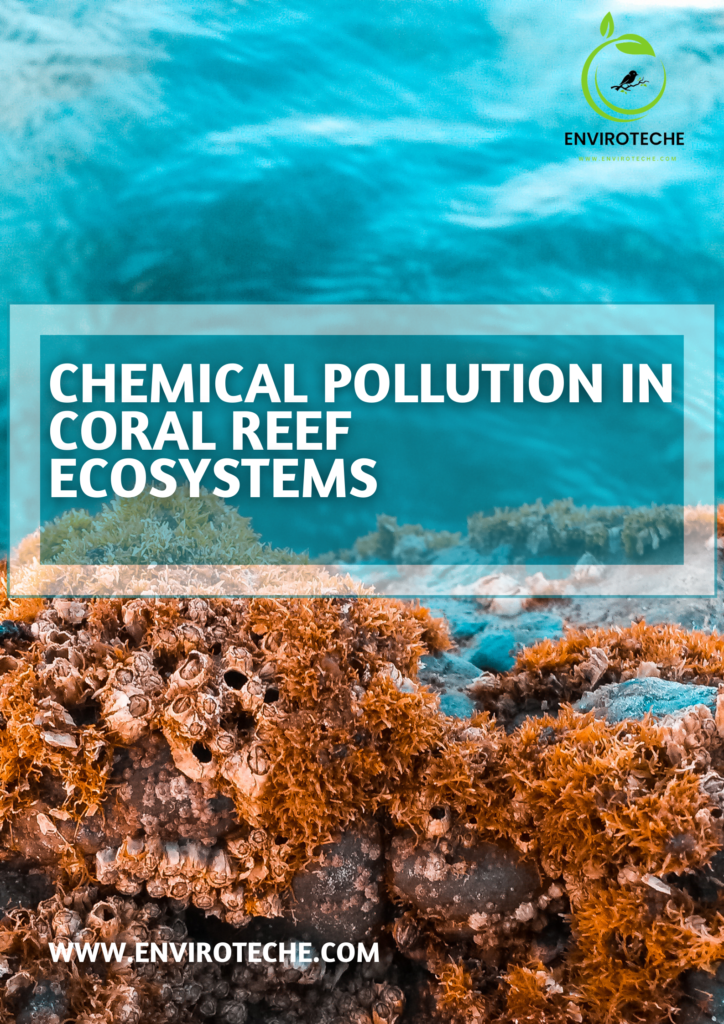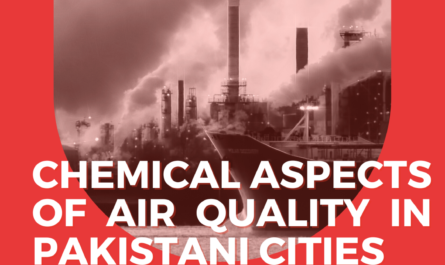Table of Contents

Coral Reef
Coral reefs are the most remarkable undersea feature created by nature. Large underwater structures known as coral reefs are built by corals. For example, the warm, shallow waters of the Caribbean or the frigid, deep waters of Alaska are home to corals that may be found all over the ocean. Tens of millions of coastal communities worldwide benefit from improved ecosystem function, variety, and livelihoods as a result.
In addition to supporting thousands of life forms, coral reefs keep coastal areas from washing away and contribute to the vitality of the ocean. However, these delicate ecosystems confront several difficulties, one of which is pollution and climate change, which endanger global conservation efforts.
Understanding of chemical pollution
Modern society relies on chemicals that negatively affect the ecosystems. One of the greatest environmental threats that humanity faces is chemical pollution. Our knowledge of the extent and dangers of dispersion, mixing, and remixing of chemicals outside of a specific geographic area is severely deficient. More attention must be directed at global sensitization and scientific investigation of the totality of toxicity risks related to chemical deployment and discard.
The global patterns of chemicals including their potential health effects on living organisms will be greatly influenced by future climate conditions. Much about a warmer planet that leads to increased average temperatures and prolonged rainy days, lowering ocean temperature levels and altering salinity in estuaries can increase the vulnerability of species and the marine environment to chemical pollutants.
What are the impacts of chemical pollution on coral reefs?
Many compounds including pesticides, trace metals, and petroleum hydrocarbons enter the reef system through various paths with different reef species or different aspects of their lives being affected. An estimated portion of 25% of the world’s coral reefs faces increasing exposure levels of sediment nutrients and chemical pollutants (Rotchell & Ostrander, 2011). There is an increased load of suspended sediment resulting in lowered visibility and disturbed behavior of feeders and herbivours.
Sediments influence directly reef fish by changing their habitat resulting in lowered growth and survival rates as well as altered predator Accumulation of such pesticides, heavy metals and other chemical contaminants in coral reef fishes has unknown ecological effects. Pollution by sewage has become a big threat to tropical waters (van Dam et al., 2011). The quality of the water became lower due to the great increase in inorganic nutrients and turbidity levels when treating wastewater, which caused significant ecological changes in the form of
- Increased macroalgal densities and species richness
- Lower cover of hard corals, etc.
- Thirdly, there were considerable reductions in fish stocks.
What are the sources of chemical pollution?
Several potential responses can occur when toxic substances are introduced into corals including metabolic changes leading to decreased rates of growth and reproduction and increased mortality. There is an urgent need for full-scale long term studies of sewage effects since this requires addressing issues in all three key components of sewage effluent. At this point, such combined effects of particulates and toxins are not documented well enough. Sediment and land-based pollution may degrade the health of coral reefs.
There are many different sources of chemical pollution including:
- Industrial Activities: Chemicals can be released into the environment by factories, chemical plants, and manufacturing operations.
- Agricultural Practices: The soil and water can get contaminated by fertilizers, herbicides, and pesticides used in farming.
- Domestic Chemicals: When domestic products like paints, batteries, and cleaning agents are disposed of, chemicals may be released into the environment.
- Transportation: Pollutants including carbon monoxide and hydrocarbons are released by vehicle emissions, particularly from cars and trucks.
- Mining: The surrounding environment and water bodies may be exposed to toxic chemicals and heavy metals released during mining activities.
What is the Role of human activities?
About 0.1% of the earth’s surface is covered by tropical coral reefs, but these regions support a striking diversity of species and yield considerable benefits to humans residing nearby (Hoegh-Guldberg et al., 2019). Nevertheless, they are presently at risk on two fronts; namely, local stressors (for instance, nutrient enrichment and chemical pollution in coastal reefs due to bad land use, agriculture, and industries), and global factors (principally warmer water and acidification, or Combined, global and local stressors may react differently but having one stress does not give the tolerance needed for another stress (Groombridge & Jenkins, 2002). Although local actions can never stop global stressors, reducing local stressors will help minimize the impact of climate change on reefs.
- Pollution Runoff: Industrial discharge, urban runoff, and agricultural runoff are sources of pesticides, herbicides, and fertilizers that may be transported or accumulated into coastal waters (DeGeorges et al., 2010). These chemicals degrade water quality and promote the formation of toxic algae that ruin coral reefs.
- Oil and Chemical Spills: Toxic substances can be released by ships and industrial units into the ocean which kill corals and the animals dependent on them.
- Wastewater discharge: Improperly handled sewage and wastewater may introduce excess nutrients and contaminants that will fuel algal bloom that will degrade the oxygen in the ocean needed for proper health and survival of corals in the reef and upset the entire reef ecosystem (El-Naggar, 2020).
How we preserve coral reefs for the future?
The United Nations has reported that 70% of the Earth’s coral reefs are threatened: 20% have irreversibly collapsed in their entirety, 24% are in danger of imminent collapse, and a further 26% are due to long-term risks incurable by quick remedies. It is particularly worrisome in the case of coastal ecosystem degradation since approximately 40% (3.1 Billion) world’s population reside along the coastline and this translates into tremendous losses to coral reef ecosystems and a serious economic/social issue. Reefs shield coastline populations, furnish sand for beaches, and yield phenomenal financial gain derived from tourism activities.
Recovery of coral reefs:
The collapse of coral reefs affects a lot of things that are important not only in the sea but also for people and even the planet. Ultimately, what remains should be conserved and that may involve taking radical measures aimed at reversing the untenable path. These changes would entail innovations and collaborations to effect social change geared towards stalling further degradation of health and recovery of coral reefs (Board & Council, 2000).
Reducing pollution is important because it protects coral reefs. Cut back on the use of fertilizers, pesticides, and other pollutants that can wash into the ocean. Refrain from standing or touching coral reefs while having fun in the water. Encourage the use of sustainable fishing methods and refrain from buying goods from overfished regions.
Conclusion:
Chemical contamination does a lot of damage to the corals and their surrounding ecology. This issue requires a broad approach involving all levels of government, companies, and local people to diminish pollution, defend these priceless marine ecosystems, and protect the variety of species that live off them. It is not only keeping coral reefs but saving the lives of numerous organisms as well as supporting coastal communities in which people earn their living from the environment.
Reference:
Board, O. S., & Council, N. R. (2000). Clean coastal waters: understanding and reducing the effects of nutrient pollution. National Academies Press.
DeGeorges, A., Goreau, T. J., & Reilly, B. (2010). Land-sourced pollution with an emphasis on domestic sewage: lessons from the Caribbean and implications for coastal development on Indian Ocean and Pacific coral reefs. Sustainability, 2(9), 2919-2949.
El-Naggar, H. A. (2020). Human impacts on coral reef ecosystem. In Natural resources management and biological sciences. IntechOpen.
Groombridge, B., & Jenkins, M. (2002). World atlas of biodiversity: earth’s living resources in the 21st century. Univ of California Press.
Hoegh-Guldberg, O., Pendleton, L., & Kaup, A. (2019). People and the changing nature of coral reefs. Regional Studies in Marine Science, 30, 100699.
Rotchell, J. M., & Ostrander, G. K. (2011). Molecular toxicology of corals: a review. Journal of Toxicology and Environmental Health, Part B, 14(8), 571-592.
van Dam, J. W., Negri, A. P., Uthicke, S., & Mueller, J. F. (2011). Chemical pollution on coral reefs: exposure and ecological effects. Ecological impacts of toxic chemicals, 9, 187-211.
Author detail:
AQSA, Aisha Ghaffar
Department of Chemistry, University Of Agriculture Faisalabad, Sub-Campus Toba Tek Singh
Check Other Scholarships:

